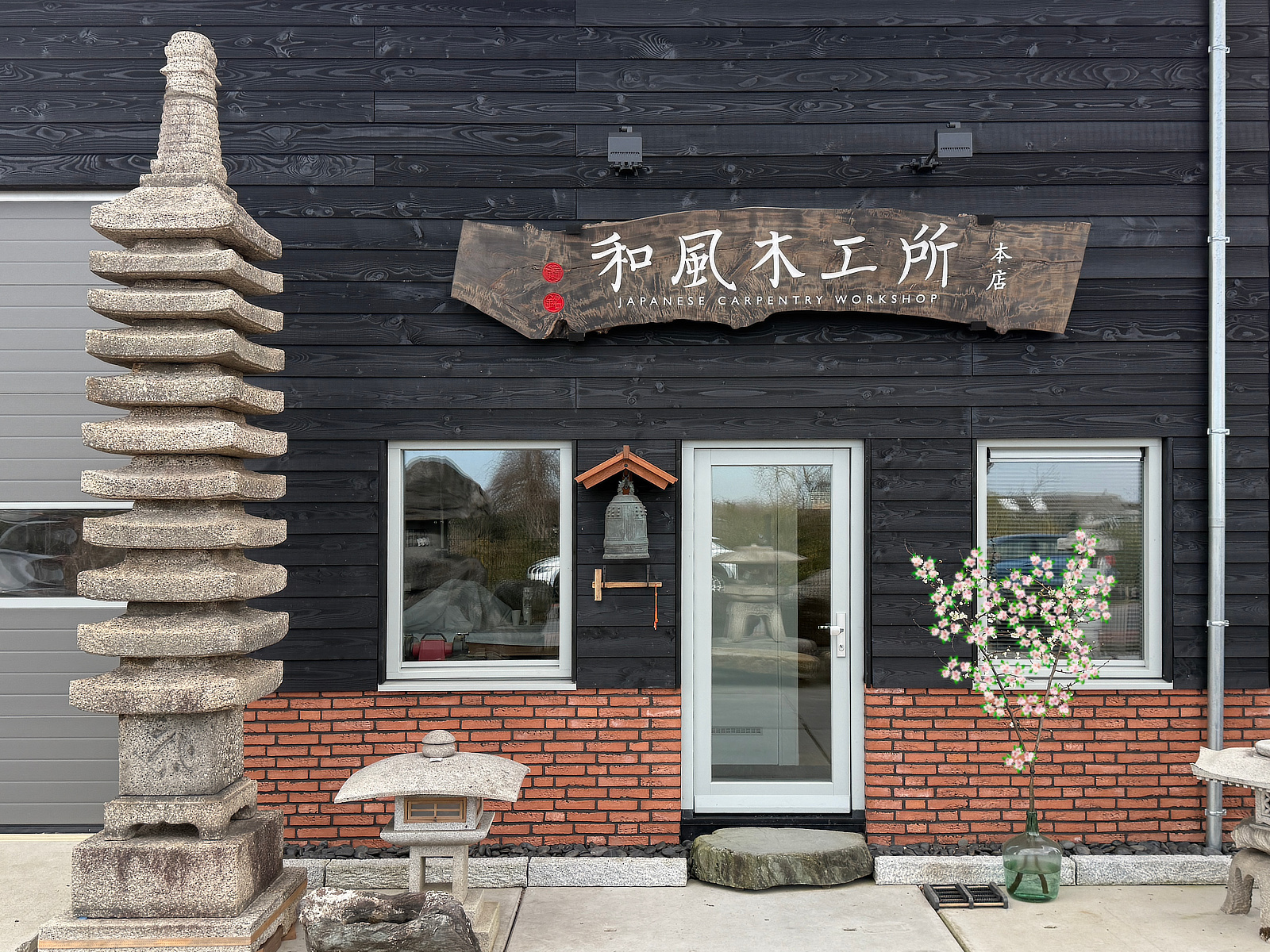Yokoso - About our Company
Yokoso Brings the Art of Japanese Garden Design to Europe. Welcome to Yokoso, the most authentic Japanese landscaping company, architectural firm, and specialist store outside of Japan for both businesses and private individuals. Over the past years, the western demand for traditional as well as modern Japanese gardens and architecture has significantly increased as both gained a wider appreciation and acknowledgement among architects, landscapers, and the general public. That is the reason why we founded Yokoso. It is our mission to build a bridge between cultures and give form to the art of Japanese landscaping and architecture throughout the world, sharing our passion with as many people as possible.
One of the biggest strengths of Yokoso is our exceptional network of Japanese advisors and suppliers. The people of Japan are famous for being very protective of their culture and national heritage, making their devotion to our unique cause extra special. Thanks to their amazing support we are able to create Japanese gardens and architecture the way the artforms are truly meant to be, with the highest levels of quality and authenticity.
A big source of inspiration for our mission is the long intriguing history between Japan and our country, the Netherlands. During the Edo period, Japan was closed off to almost all other nations in the world. Only the Dutch were allowed to trade with the Japanese on the small island of Dejima in Nagasaki. For more than 200 years, this was the only contact between Japan and the western world. The importance of this piece of history is reflected in the Kanji character seen in our logo. This character represents the Netherlands and was first used during the Dejima time to describe the many things the Dutch introduced to Japan. Based on this, the character can be considered a symbol of friendship between the two countries, a perfect representation of what Yokoso is all about.
After Yokoso was founded a decade ago, we have realized a vast variety of projects with great success. Think of Japanese garden designs, complete construction, small-scale architecture as well as fully equipped houses and pavilions. There are no projects too big or complex for our dedicated team.
In an era where wellness and simplicity are increasingly valued, Japanese gardens offer a timeless antidote to the noise and rush of daily life. They are more than landscaped spaces — they are living expressions of nature, culture, and philosophy. In the Netherlands, Yokoso Japanese Gardens stands at the forefront of this tradition, designing and constructing both traditional and contemporary Japanese gardens for private clients, businesses, and public institutions across Europe.With deep respect for the classical literature of Japanese garden-making, including the foundational manual Sakuteiki, Yokoso crafts outdoor environments that inspire serenity, beauty, and balance.
The Japanese garden is rooted in principles that go far beyond aesthetics. It reflects a harmonious dialogue between humans and nature, guided by spiritual and philosophical ideals such as:
The Philosophy Behind Japanese Gardens
Wabi-sabi - The beauty of imperfection, aging, and simplicity
Shizen (自然) - The concept of organic, unforced naturalness
Ma (間) - The creative use of space and silence
Mono no aware (物の哀れ) - An awareness of the impermanence of things
Yokoso's Design Process: Guided by Sakuteiki
Yokoso bases its garden design process on the Sakuteiki (作庭記), the oldest known manual on Japanese garden creation, written in the 11th century. Although ancient, its principles are strikingly relevant today, emphasizing respect for natural topography, symbolism, and balance.
Step 1: Site Study and Orientation
The process begins with an in-depth analysis of the site: This stage is about listening to the land,
as the Sakuteiki instructs.
Environment - Terrain light, and wind direction
Scenery - Existing trees and vegetation
Architecture and surroundings - shakkei, or borrowed scenery
Step 2: Conceptual Design
Designers translate both client wishes and Sakuteiki principles into a coherent vision:
- Positioning of stones and water features based on symbolism
- Use of asymmetry and natural flow
- Integration of spatial philosophy like ma and yūgen (subtlety)
Step 3: Material Selection
Yokoso prioritizes authentic, natural materials, many of which are imported from Japan:
- Antique stone lanterns (tōrō) and water basins (chōzubachi)
- Hand-carved stepping stones and boulders
- Traditional plants and trees, selected for texture and seasonal change
Step 4: Construction by Craftsmen
The construction phase is carried out by artisans skilled in:
- Traditional stone setting
- Water feature installation
- Japanese carpentry for tea houses, bamboo fences, and gates
- Planting with attention to seasonality and long-term growth
Step 5: Aftercare and Maintenance
A Japanese garden is never truly "finished." Yokoso offers maintenance and guidance to ensure the garden evolves gracefully over time.
Types of Japanese Gardens Offered by Yokoso
Yokoso’s portfolio includes a variety of garden types, each tailored to suit different environments,
scales, and functions:
1. Karesansui (枯山水) – Dry Rock Garden
Also known as Zen gardens, these feature raked gravel, strategically placed stones, and minimal vegetation to symbolize water and mountains. Ideal for contemplation and temple-inspired spaces.
2. Chaniwa (茶庭) – Tea Garden
A garden designed around the tea ceremony, with a roji path, stone lanterns, chōzubachi, and a teahouse. Every step toward the teahouse prepares the visitor mentally and spiritually.
3. Tsukiyama (築山) – Hill Garden
These gardens emulate natural landscapes with elevations, streams, and miniature waterfalls. Suitable for larger spaces and ideal for creating a lush, immersive experience.
4. Tsuboniwa (坪庭) – Courtyard Garden
A compact garden designed for inner courtyards or urban environments. Despite its small footprint, it incorporates moss, rocks, and water elements to create a serene focal point.
5. Kaiyū-shiki Teien (回遊式庭園) – Strolling Garden
Designed for walking and discovery, these gardens feature winding paths, bridges, ponds, and seasonal views — revealing new perspectives with every step.
Trees, Plants, and Ground Covers in Japanese Gardens
Yokoso carefully selects plants suited to the European climate while preserving the visual language of traditional Japanese gardens. Plant selection is a crucial part of Yokoso’s garden design. Japanese gardens use plants not for floral display, but for form, color, and seasonal transformation. Some Iconic Trees, Shrubs, Bushes, and Ground Covers:
Acer palmatum (Japanese Maple) – Prized for its fiery autumn colors and elegant branches
Pinus thunbergii (Black Pine) – A symbol of endurance, often pruned into sculptural forms
Prunus serrulata (Cherry Blossom) – Representing the fleeting nature of life
Camellia japonica – Blooming in winter and early spring, often near teahouses
Azaleas (Rhododendron spp.) – Clipped into soft mounds, adding subtle color in spring
Nandina domestica (Heavenly Bamboo) – With red-tinted foliage and berries
Sugi-goke (Kyoto moss) – Soft, velvety, and essential in creating a sense of age
Ophiopogon japonicus (Dwarf Mondo Grass) – Great for borders and edges
Ferns and shade plants – Used to enhance natural woodland effects
Authentic Ornaments in Yokoso Gardens
Japanese gardens are known for their symbolic ornaments, each one telling a story or guiding the visitor’s experience. Yokoso integrates these features with reverence and accuracy.
Tōrō (Stone Lanterns)
Used to mark paths, illuminate corners, or accompany water features. Types include:
Yukimi-dōrō – “Snow-viewing” lanterns with broad roofs
Kasuga-dōrō – Tall, slender temple lanterns
Oribe-dōrō – Rustic lanterns for informal settings
Chōzubachi (Water Basins)
These granite basins are used for ritual hand-washing, particularly in tea gardens. Typically paired with a bamboo ladle and spout.
Ornamental Rocks and Gravel
Stones are placed according to the Sakuteiki — no rock is random. They represent mountains, islands, or animals. Gravel or white sand is raked into patterns to represent water currents or space.
Stepping Stones (Tobi-ishi)
Irregular stone paths that slow the pace of movement, encouraging mindfulness. Their placement is intentionally asymmetrical to enhance awareness.
Create Your Tranquil Escape with Yokoso
Whether you envision a small Zen retreat, a tea garden for cultural gatherings, or a large-scale landscape for corporate wellness, Yokoso Japanese Gardens offers the expertise, authenticity, and passion to bring your vision to life. Each project is a journey — one that honors tradition while adapting to modern needs and environments.
#YokosoJapaneseGardens #JapaneseGardenDesign #AuthenticJapaneseGardens #ZenGarden #LandscapeDesign #KyotoStyleGarden #JapaneseLandscaping #TraditionalGardens #GardenInspiration #OutdoorAesthetics #JapandiGarden #GardenCraftsmanship #NatureAndDesign #Sakuteiki #WabiSabi












Contact Yokoso Japanese Gardens